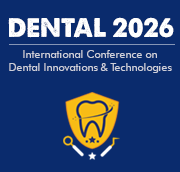Title : Corticotomy combined with BCGF and/or “sticky bone” or “sticky tooth”: The baruti-demiraqi approach - where surgery meets orthodontics
Abstract:
Corticotomy has been utilized with varying degrees of success to expedite orthodontic movement; however, a clearly defined protocol for its application remains absent. This gap underscores the necessity for the development of a comprehensive protocol. The history and procedural intricacies of such treatments are elaborated upon in both orthodontic and surgical lectures. A thorough review of current literature and the outcomes achieved is also presented.
Aim: The objective of this lecture is to introduce a decade-long clinical study employing the corticotomy procedure in conjunction with Blood Concentrated Growth Factors (BCGF) plus “Sticky Bone” and/or “Sticky Tooth,” the modified PAOO approach known as developed by Dr. Edlira Baruti and Dr. Gurien Demiraqi. This initiative aims to establish a clearly defined protocol encompassing diagnosis, indications, treatment planning, and expected outcomes.
Materials and Methods: In this study, corticotomy was performed alongside BCGF and/or “Sticky Bone” or “Sticky Tooth” techniques on patients presenting with insufficient bone and compromised root structures, as well as inadequate quantity and quality of gingival coverage. Surgical interventions were predominantly conducted under sedation, with the corticotomy predominantly applied to the buccal aspect of both the maxilla and mandible. Blood samples were obtained during the procedure using the Vacutainer system and processed via the VLAD centrifuge. Following the corticotomy, which was primarily executed using piezoelectric surgery, the bone surface was irrigated with autogenous serum and subsequently covered with autogenous white Buffy coat (Cloud) enriched with CD34+ growth factors in a membrane format. A layer of “Sticky Bone,” and when feasible, autologous “Sticky Tooth,” was then positioned beneath the fibrin clot. Bracket bonding was completed prior to the surgical intervention, with orthodontic activation commencing immediately post-surgery and continuing biweekly thereafter.
Results: The outcomes of our protocol indicate that patients were initially evaluated two days post-surgery. The post-operative period was characterized by minimal edema across all cases, with only low dosages of analgesics, such as ibuprofen, required for a maximum of two days. The overall duration of orthodontic treatment ranged from 4 to 12 months, with follow-ups extending beyond five years, which included clinical evaluations and CBCT assessments.
Conclusion: The integration of corticotomy with BCGF resulted in significant benefits for all patients involved in the study: A reduction in orthodontic treatment duration, minimal pain and edema during the post-operative phase, and notable improvement in periodontal and gingival conditions. The use of “Sticky Bone” or, preferably, “Sticky Tooth” demonstrated substantial and stable enhancements in bone quality over time



